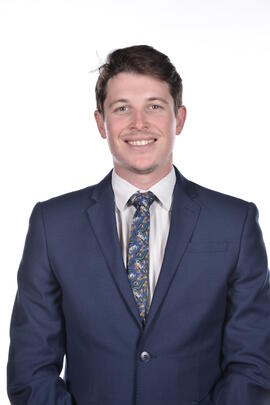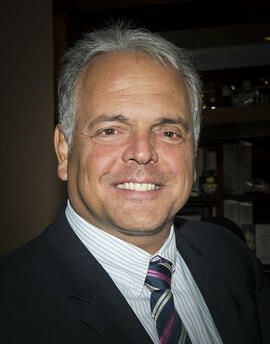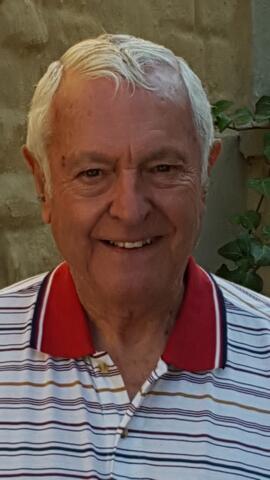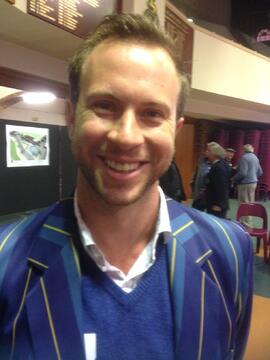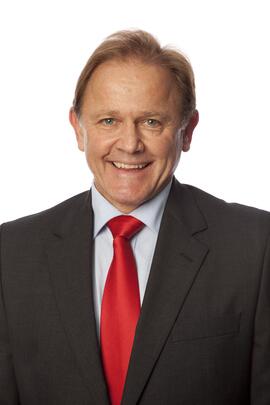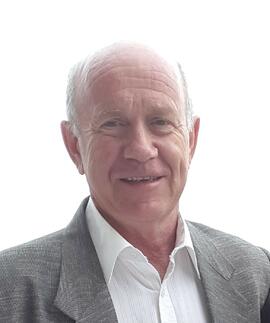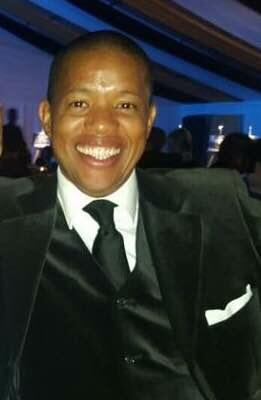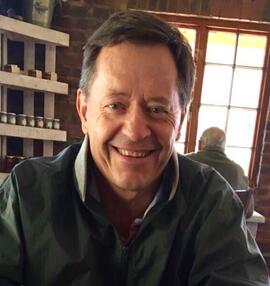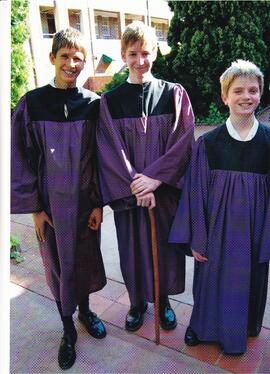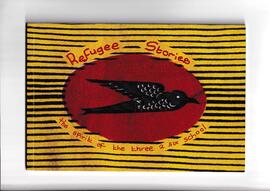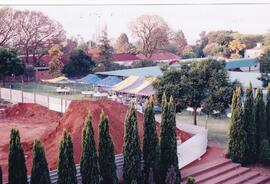1
Speech at the 70th Anniversary Gala Dinner, St David’s Marist Inanda
Sim Tshabalala
No product of the Marist Brothers could fail to be beleaguered by tremendous feelings
of humility, privilege and gratification at a function such as tonight’s; humility for being in
the presence of luminaries of Catholic and Marist education as well as immensely
successful products of St David’s; privilege and gratification at the knowledge that one
is counted as a friend of St David’s.
I was lucky to have had parents who had the means to be able to send me to Marist
Observatory in 1978. I was fortunate to be nurtured by the Marist Brothers in joint
venture with the Holy Family sisters, the Ursuline sisters and the laity in an environment
of love, fairness, equality and care.
I have always been struck by the intensity of the Marist faith. The sheer power of this
faith reminds me of some famous lines of the great Catholic poet Gerard Manley
Hopkins. He wrote, ‘The World is charged with the grandeur of God, It will flame out, like
shining from shook foil.’ The Marist brothers in joint venture with the Holy Family sisters,
the Ursuline sisters and laity who taught me at Sacred Heart College did indeed seem lit
up from the inside by their faith; charged full of imagination, hope and energy. They
shone with an unshakable determination to side with the underdog in pursuit of equality
and fairness
I always felt at home at Sacred Heart. Though I was a little boy from Soweto, I always
remember how special I was made to feel. And there I was given gifts beyond price: an
excellent, fully rounded education and the skills and values I draw on every day as a
professional and as a citizen of South Africa.
My mentors from this community included Brother Mc Cartin. Memories of him talking to
me in the quad at Obs after school are indelible. I remember distinctly stories of his life
in Ireland, his journey to South Africa and his Marist work. Because of listening to him, I
even considered becoming a brother! How lovely that would have been instead of being
a member of one of the ten most hated professions: banking. I remember fondly Brother
Paul as he would walk to his room with his dog Susie, stop, and chat about this and
that. I remember well brother Raymond with his strong Irish accent. He was our under
13 rugby coach, and that was the only year my cohort beat Inanda during the ordinary
season – although, of course, we drew with them during the Inter Marist rugby
tournament which was held at St Josephs Rondebosch in our matric year. That draw
was sweet and it is unforgettable. I am on dangerous ground here, but I attribute our
string of losses to Inanda from under 13 to our final year entirely to the fact that we
became co-ed in 1980 whereas the Inanda leadership had the good sense to remain a
Single sex school, one of whose benefits was the preservation of a strong rugby
tradition. Neil Mc Gurk is unforgettable. I learned a huge amount from him: commitment
to community combined with a deep desire to transform it; the love of philosophy; and
an abiding adoration of St Thomas Aquinas’ work and natural law.
2
It seems to me that nothing has changed since I devoured Brother Mc Cartin's immortal
words, grappled with Brother Neil's incredibly complex ideas and got routinely trounced
by Walter Cronje's men. I have a tremendous love for the Marist tradition, and a
permanent admiration for St David’s.
Ladies and gentlemen, when I was asked to speak tonight on the topic: ‘Confortare esto
vir’ – ‘Take courage and be a man,’ I was immediately filled with trepidation. Was this
some kind of coded message about a resurgence of the global financial crisis? Were
the Marist Brothers trying to tell me something?
But once I had calmed down, I remembered that this isn’t actually a financial forecast.
As you know, it’s really the inspiring motto of this great school, founded seventy years
ago as an act of bravery and optimism in defiance of the surrounding horrors of the
Second World War.
The motto comes, in fact, from the First Book of Kings, Chapter 2. They are King
David’s dying words of advice to his son, Solomon, who was to become the wisest and
best of the biblical kings of Israel. David said, ‘Take courage and be a man. Observe
what the Lord your God requires. Walk in obedience to him, and keep his decrees.... Do
this so that you may prosper in all you do.’
What I find most interesting about this text is that it says that courageous, wise and
good people have to be observant and obedient. In a foreshadowing of the Marian
tradition of striving always to be consciously present in the world and to heed the call of
duty, these verses call upon us to look carefully around us; to work out what is required
of us by our religion and our values; and to take steps to fulfil those requirements.
What do we find when we look about us in South Africa? I think we find many good
things - including a democracy that has just reaffirmed both its vibrancy and its stability;
an economy that is clearly on its way to recovery; and this attractive and excellent
school. There’s much to be proud of, and certainly no need for gloom.
But we also observe a great deal of poverty and that we are the world’s most unequal
country.
65% of the population live on less the R550 a month – less than a monthly satellite TV
subscription. 12% of South Africans are desperately poor, struggling somehow to
survive on R150 a month – less than the cost of a very modest lunch for two in Sandton.
In other words, those of us who are lucky enough to be celebrating this anniversary
here tonight live on a small island of prosperity in a sea of poverty.
South Africa is so unequal because we have one of the world’s highest unemployment
rates. The unemployment rate for black South Africans under 30 is over 50%. Twothirds
of 15-to-30 year olds who want work have never been able to find a job. The
3
reason why these millions of young people can’t find work - or create it for themselves -
is simple. They have been failed by our education system.
Admittedly, there are some bright spots in the education landscape, and last year’s
matric results may signal some improvement - but the overall picture remains extremely
bleak. Two facts I find particularly telling are that the average Grade 3 literacy teacher
can barely pass a Grade 6 test, and that the average South African maths teacher –
teacher, not student – scores 39% on a test of the material they are supposed to be
teaching. If the teacher can’t properly understand the work, how on earth are the pupils
supposed to learn?
Our educational deficiencies look even worse in the light of global standards. This year
the Global Competitiveness Report found that our inadequately educated workforce was
the second biggest constraint to doing business in South Africa. (Our inefficient
bureaucracy was first – and much of that inefficiency is also explained by poor
education.) South Africa ranks among the bottom 10% of countries on the quality of our
education system. We do far worse than many much poorer African countries, including
Mali, Tanzania and even Cote D’Ivoire, which is just emerging from a decade of civil
war.
The abject failure of most of the education system is not merely tragic and wasteful– it’s
also very dangerous. This is because unemployment and inequality fuel crime and
instability, and create an enthusiastic audience for destructive populist politicians.
Our motto tells us that good and wise men observe, and then obey.
I believe that this means that we are called upon by our faith and by our ethics to take
active steps to improve South Africa’s education system. But what steps? I submit that
the answers have been given to us – very appropriately – by two great Catholic
educationalists: St Marcellin Champagnat and Blessed Cardinal John Henry Newman.
St Marcellin founded the Marist Brothers nearly two hundred years ago in order to bring
education and religious enlightenment to poor children in remote rural areas of France,
and to ensure that they were taught with humility, modesty, simplicity and love. With the
passing of time, Marist Inanda now finds itself in what is probably the most affluent part
of South Africa’s little island of prosperity. The school therefore attracts most of its
pupils from prosperous and sophisticated families. Through no fault of your own, St
David’s is significantly less diverse in terms of both race and income than it could be.
I know that you are very aware of the tension this creates: How best can St David’s
reconcile its present affluence with the Marist mission to the poor? More generally, how
4
can those of us perched on the little island of prosperity respond with honour and
courage to the sea of poverty and inequality around us?
It is entirely right that St David’s should continue to stretch itself to reach and serve
disadvantaged pupils and badly trained teachers. I know that the boys at St David’s do
a lot of outreach work. I can only say to them, ‘Thank you – and do more!’ And, of
course, one of the main purposes of tonight’s event is to raise funds for the Marcellin
Champagnat Campaign to establish an endowment that will provide pupil bursaries and
the teacher learnerships here at St David’s. Again, I can only say, ‘Thank you – and be
even more generous!’
I hope you won’t mind if I make a banker’s suggestion? From my perspective, St
David’s Marist Inanda looks like a particularly successful ‘business unit.’ If we were
looking for resources to, say, expand our branch network into new territories, we would
have a debate about transferring some of the profits from the successful units to fund
the expansion as this would be in the interests of the entire enterprise. This would not
be an easy or a comfortable conversation. It would be necessary to avoid unfairness,
and to think carefully about how much money and other resources could be transferred
without damaging the profitability and sustainability of the successful business units. I
believe that St David’s is called upon by its Marist values to keep on having this
uncomfortable conversation. Please ask yourselves very regularly whether St David’s
can do more to cross-subsidise other Marist and Catholic education.
Cardinal Newman was a leading figure in the campaign to achieve social and political
equality for Catholics in Britain and Ireland in the 19th century. A former Anglican, he
was the prime mover behind the establishment of the Catholic University of Ireland,
which was to become the University College, Dublin, today, Ireland’s premier university. He
argued that one of the most important tasks for Catholics was to create centres of
unabashed educational excellence. At the time, almost all Catholics were very poor.
But, Newman argued, this did not mean that the community should focus exclusively on
immediate poverty relief and basic education. Instead, it should also aim to create
centres of unashamed educational excellence, which could produce a new Catholic elite
to lead the community and to influence society in general.
Newman was very interesting on what this new elite should be taught. He argued that a
significant proportion of their education should be in the liberal arts and humanities. His
view was that - even more than their specific professional training - leaders need the
ability to think critically and clearly and to argue logically and persuasively. This has
certainly been my experience, and I entirely agree with Newman that one of the
characteristics of an elite school like St David’s should be a concentration on literature,
history and debating – especially since the South African university system encourages
most students to specialise in professional subjects from their first day at university.
5
I would urge you, therefore, to follow the Blessed Cardinal Newman as well as St
Marcellin. As you stretch out to do more for the disadvantaged, do not lose focus on
your core mission of empowering every St David’s boy to develop all his talents, to
achieve all-round excellence, and to grow into men who are both wise and good. Also –
and this is very important too – I hope that the school continues to ensure that every
boy enjoys himself and is happy here.
On second thoughts, perhaps the boys shouldn’t enjoy their time here too much.... I’m
thinking here of one famous Marist Old Boy – he knows who he is – he is the
personification of the Marist way and the quintessence of the St David’s motto, he is a
carrier of this institution’s values and beliefs and he has motivated and inspired
thousands of boys in his long history with the school. He loved the school so much that
he found it necessary to do matric twice, and then to stay here for another 40 years. He
has given his name to a bursary which “is awarded to a boy who shows sporting
promise and who will be able to maintain the required academic standard.” He is loved
and revered and is prototypical of what St David’s boys ought to be, what they can be,
what they will be.
Finally – and I know Willy Castle will agree with me about this - I’d like to say
something about the merits of St David’s as a boys-only school. Certainly, there are
dangers to be avoided in a boys’ school and such dangers are avoided in co- ed
schools such as my alma mater, Sacred Heart College. These dangers include the risk
of becoming obsessed with sporting success to the exclusion of other achievements, or
of creating a culture which regards women as ‘a different species.’ But I know that St
David’s avoids these risks, thanks to its emphasis on all-round achievement and to its
thoroughly Catholic insistence on treating everyone with dignity and respect.
South Africa desperately needs more courageous and responsible men. At present,
only 36% of children are being raised in a home with a father. Far too much of our social
and political life is shaped by immature and irresponsible boy-men, whose paths to
fame, wealth and power are littered with broken promises, risky personal behaviour and
thoughtless or even cruel treatment of the poor, the weak, children and the elderly. St
David’s is performing an extremely valuable social service by fostering a brave, wise
and responsible masculinity that defies these trends and shows what being a man –
esto vir - truly means.
Long may you continue to do so!

